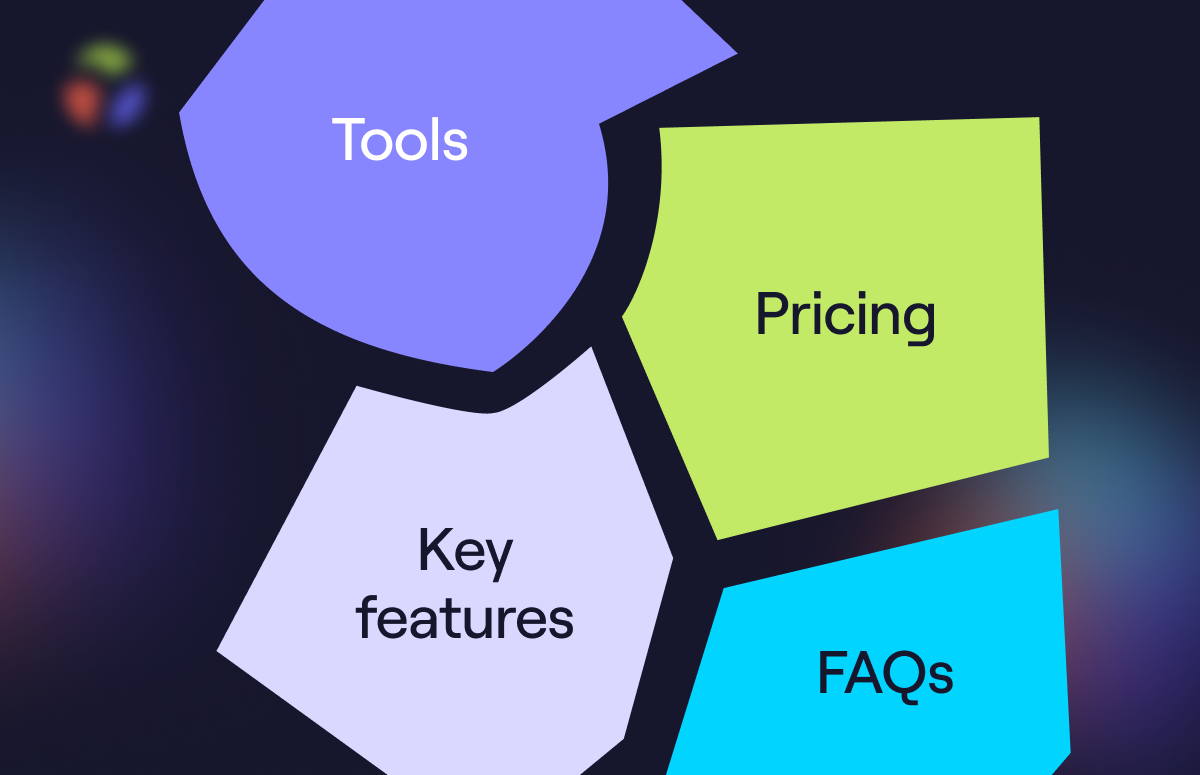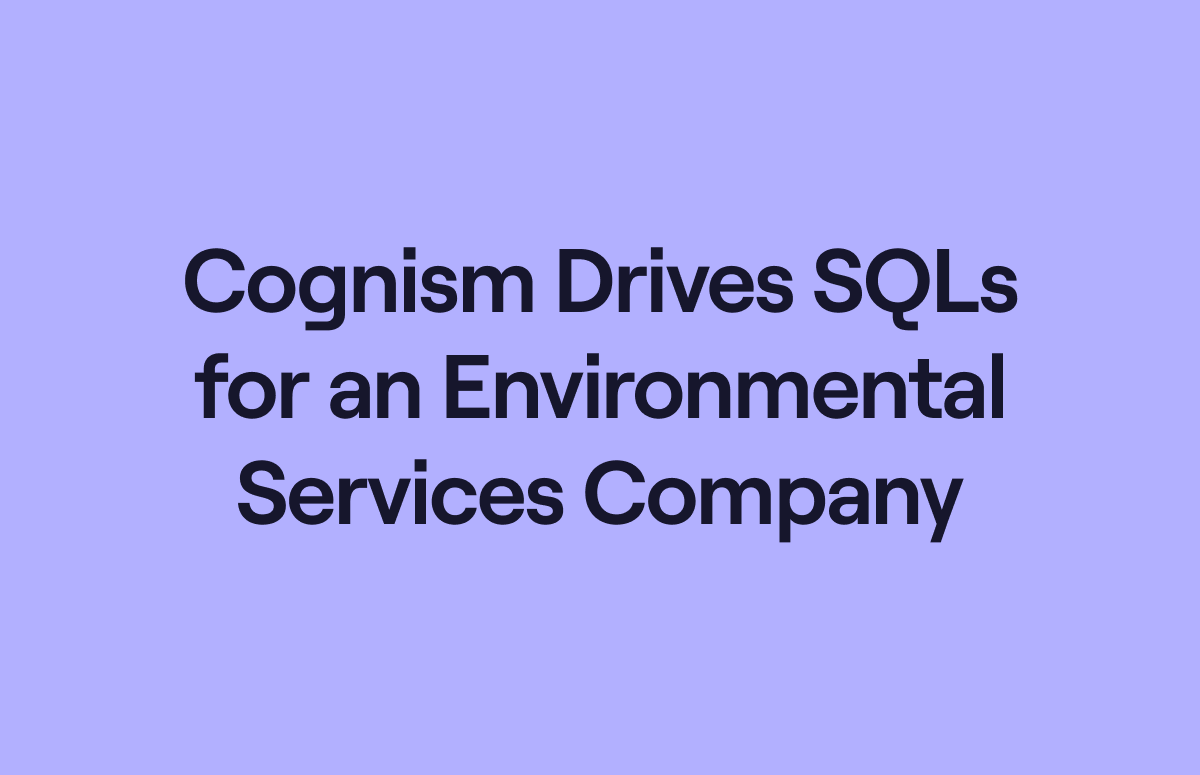How to Nail Your Niche (With Aaron Ross)
If we told you that narrowing your focus onto one target segment of the market could be the key to starting your business growth, you might think that sounds counterintuitive. Bigger is better, right?
Not in this case! 🤷♀️
Think of it this way:
If you’re dooking for apples at Halloween and you want to get one, you’ll never be successful if you look at all of them at once.
But if you set your eyes on just one of them, then it’s more likely to be a sure thing.
Only once you’ve managed to grab that first apple can you think about looking at the others.
And it’s the same idea for nailing a niche. You’re simply honing down your focus on one specific target, allowing you to secure your place in the market, before moving onto the next.
New companies with a large portfolio of products or a wider audience base face the same problem. A lack of focus distracts you from being “insanely great” at just one thing.
In comes nailing your niche. 🦸🏻♂️
We sat down with Aaron Ross to dig a little deeper into this topic. Read on for some steps on how you can unlock this route to growth.
Why focus on a niche?
When you think of the term ‘niche’, you might think small. And why would you want to limit your market? The whole point of business is to reach and serve as many people as possible, isn’t it?
How else will you grow if not to cast a wide net and pull in as many customers as possible? Surely you’d be turning down a lot of important opportunities?
It doesn’t quite work like that and here’s why:
Doing too much all at once is a recipe for being spread too thin, resulting in doing nothing very well.
If you try to target too many people with the same vague, unspecific marketing messaging, then no one will have a clue who it’s for and why it will add value for them.
Aaron explains:
“Hypergrowth doesn't come from selling many things to many markets, covering all your bases (really, dividing your energies).”
“Hypergrowth comes from focusing on where you have the best chances of winning customers, making them successful, building a reputation of tangible results, and then growing from there.”
“When you nail a niche, you're not ‘thinking small.’ You're not limiting your dream. You're not permanently shrinking your total addressable market.”
“Niche here means focused. On a specific target customer with a specific pain. Regardless of how many types of customers you could help, or how many of their problems you could solve.”
So instead of jumping straight into the long-term goal of who you want to do business with, consider this question:
Where’s the easiest place for you to start building your momentum?
Aaron adds:
“Focusing on specific industries or types of customers - like banks, software companies, or large businesses - is part, but not all of it. It also means focusing your unique strengths (not all your strengths) where they can create the most value (not any value), and:”
- “Solve a specific pain for
- An ideal target customer in
- A believable, repeatable way,
- With predictable methods to a) find and b) interest them.”
“Any kind of specialisation that helps you to break through the clutter, stand out, be the best, win, or be unique is valuable.”
This isn’t a problem that just small companies and startups face. It’s not a one-and-done kind of problem either. This is an issue that can continue to occur as you grow and expand your product portfolio, new geographical locations or addressing new market segments.
Aaron says:
“Your CMO, division, or individual salespeople may need to repeatedly nail down who is being targeted, who needs (not wants) you most, why should they buy, and for how much money.”
Identifying the problem
So how do you know if you have or haven’t nailed your niche yet?
Let’s assume you have a product that works. And you have some users who are enjoying it.
But you’re struggling to get people who haven’t heard of you through word of mouth to be interested or understand what you have to offer (whether that’s through your marketing or outbound).
In other words, you’re spending money on lead or demand generation but with little to no returns.
Sometimes it hits you at the top of the funnel and you can’t get appointments in the first place. Other times, at the bottom, when you aren’t able to close those meetings.
Aaron says:
“The most common reason for this would be you haven’t nailed your niche. Of course, there will be other reasons scattered in there sometimes, but this is a big signal that you need to focus on your niche.”
“A lot of business success in the early days comes from referrals or word of mouth - people who know you, are willing to vouch for you and support your business. They’re willing to take a risk or trust you without much marketing.”
“But at some point, your business needs to stand on its own two feet.”
“You know you’ve nailed your niche when you're able to find and sign up unaffiliated customers. Unaffiliated. Paying. Customers.”
If your product doesn’t work, then that’s a hard problem to solve. If it works, then all you need to do is this:
Find the right market segment that needs it the most.
Nice to have vs need to have
Businesses don’t tend to buy ‘nice to haves’ the way that general consumers do.
General consumers are much more likely to buy things they want, for example ice cream or a new outfit, whereas businesses work within specific budgets which they will be held accountable for. This means their decision-making process for what they invest in is more considered.
Aaron says:
“It takes a lot of energy to buy and use something new, so if you're a nice-to-have, it won't stick. Nice-to-haves fall to the bottom of the ‘must do’ list.”
“Marketers want a beautiful website - but they need a website that converts visitors to outcomes such as leads or purchases.”
Meaning, if you’re a company designing gorgeous websites, but your messaging doesn’t contain anything about how this shiny user interface converts customers, then B2B marketers will likely put it in the ‘nice-to-have’ category.
This means that you either have to alter your messaging, or find the market segment that needs your product.
“If the buyer doesn't need your solution, they won't be motivated to go through all the work to convince their people, justify the purchase, roll it out, and get people to use it.”
“What problem is painful enough that a team of people will spend both their money and time to fix it?”
Here’s an example:
PayPal focused on providing payment solutions for eBay users; the reason for this was eBay wanted to provide protection for their customers when buying from individuals..
How could this work for your business?
- Identifying your ideal customer profile - a segment of the market that needs your product.
- Understanding what makes this ICP tick - what is their situation, what are their pains, their goals, and how do they like to be spoken to?
- Then speak to these needs in their language. Connect with them. Be deliberate, specific and explain why you are the perfect fit for them.
Market fatigue
Another reason why you might be struggling to grow is simply the vast market fatigue in today’s climate. There are so many companies fighting for air time; consumers are overwhelmed by choice and now no one has a clue what to buy and from whom.
This is another way in which honing in on a niche can be a useful strategy.
People need a solution, but they’re almost scared to go out and look for it. The second they start searching, they’ll be bombarded with options, all saying the same thing, making it impossible to make a decision.
To compound that, everyone’s attention span has become shorter. Especially with companies they haven’t heard of before. Why would you trust them?
But if you have a solution that can genuinely help them, and you target them specifically - rather than the entire market with vague messaging - talking in simple language they understand… well, you make their job of choosing much easier.
Aaron says:
“The whole point of nailing a niche is to help you cross the trust gap, moving from depending on buyers on the right side (early adopters, people who know and trust you) to being able to better market and sell to buyers on the left side (customers who have never heard of you).”
“You have to either (a) find a way to fit your message into that short slice of attention, or (b) expand the amount of attention they're willing to give you.”
Marketing to your niche
Aaron has an interesting way to think about marketing to those people on the right side of the trust gap, those people who have never heard of you before, don’t trust you or have a long attention span.
He says you should consider their attention span as the same as a 10-year-old.
“With those tiny slices of attention that ‘cold’ people are willing to give you, it's similar to the mental investment of a 3rd or 4th grader.”
“So your message has to be simple for them to both understand and easily act on, or else they'll move on before ever giving it a chance.”
When introducing yourself to new prospects, you might feel the need to tell them everything about you and your company - you want to educate them on who you are, right?
But the problem with this is that these people have no reason to invest any time in learning about you, so they’re not going to bother reading scores of text.
This is why short and sweet tends to work well in these early stages.
Aaron suggests putting yourself in their shoes:
“You can watch this in yourself: what goes through your head when you get a long note from someone, even someone you know? What about a short one?”
“Do you see how the effort you're willing to give that messages changes so dramatically depending on who it comes from, how simple it is, and what they are asking for?”
Another way to think about marketing to new potential customers is to think about the ‘dinosaur brain’.
Aaron says:
“Reptiles think with their eyes, not their brains - and so do we! Dinosaur-brain thinking isn't about thinking consciously and making logical decisions - it's about reacting.”
There are certain things our brains notice subconsciously before our conscious minds have had time to catch up, like:
- Newness
- Contrast (One pen with an orange lid in a pot with only blue pens)
- Movement/speed
- Surprises
- Details
- Visuals
Aaron says:
“Learning how to reframe your ideas to appeal to people's dinosaur brains makes sense when you consider the tiny window of attention you get.”
Combine this with messaging that positions you as a ‘need-to-have’ and you’re flying.
“If you’re solving a need, how can you describe what you do differently, so prospects also see it that way?”
“What differentiates the customers who need you from the ones who don't? Where can you create the most financial value?”
Finding your niche: key takeaways
How do you find a niche that’s right for your organisation and ripe for growing your business?
Aaron gave us five areas to think about.
- Which market segment has a pain that you can solve?
- Where could you demonstrate tangible results?
- How do you position your solution so claims are believable? Your prospect has to believe you can deliver.
- Can you build a list of identifiable prospects to target? You need to know who you’re going after before you can actually target them.
- Are you unique? Why? And how do you engrain that into your marketing?



